#chambered cairn
Text

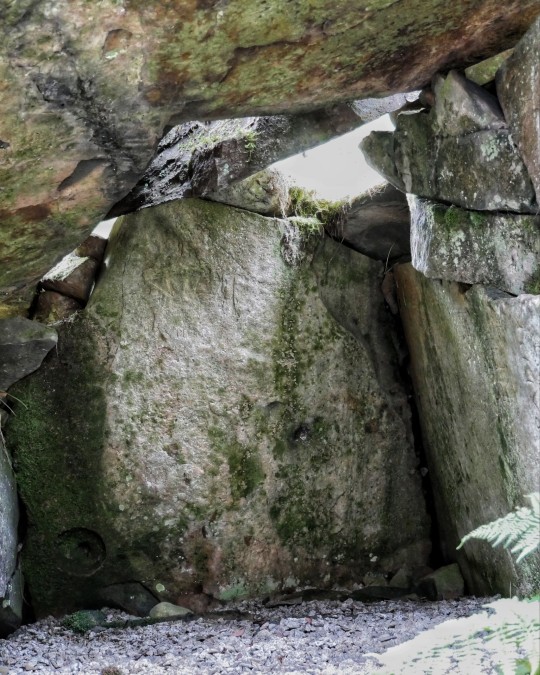


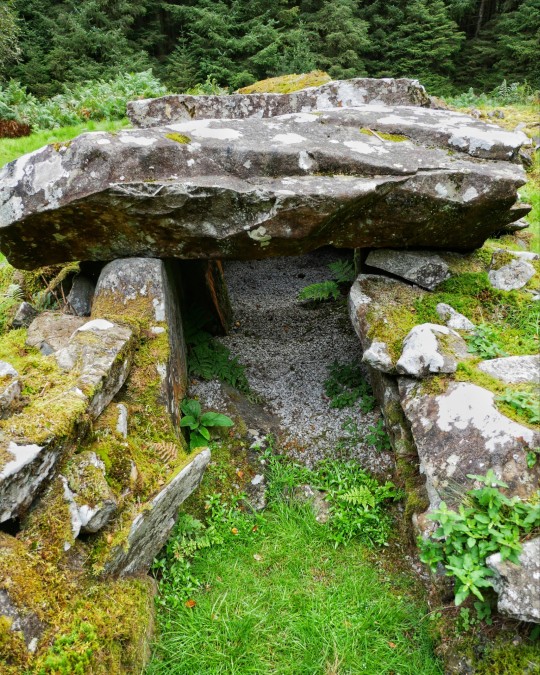

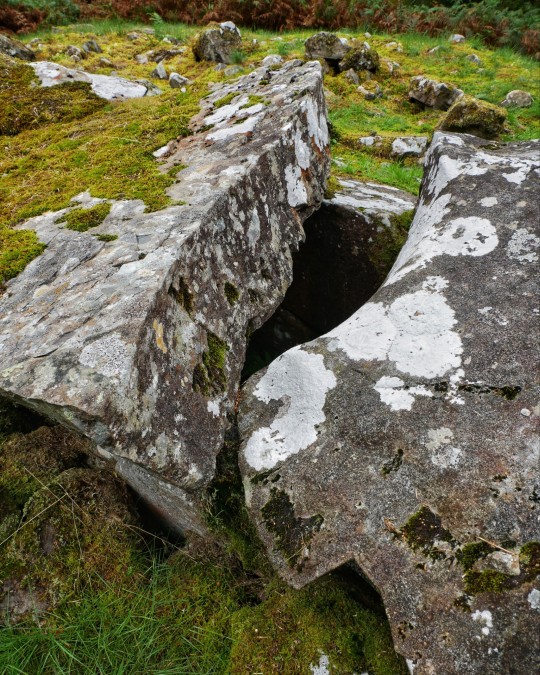
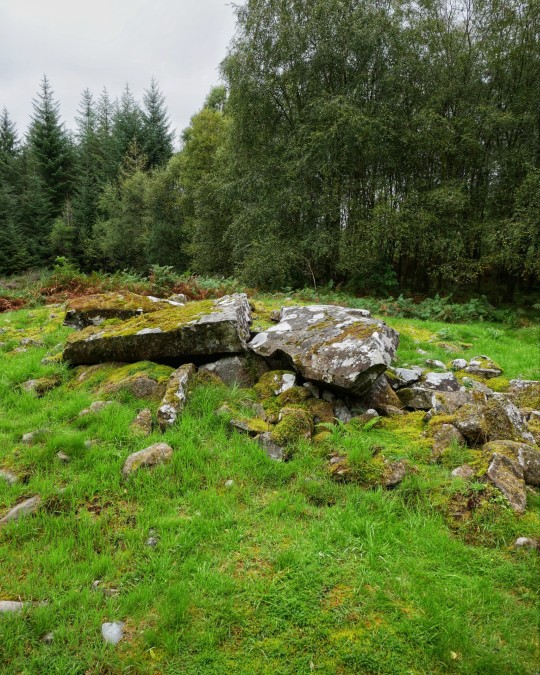


'The White Cairn Of Bargrennan' Prehistoric Chambered Cairn, Dumfries and Galloway, Scotland
#ice age#stone age#bronze age#copper age#iron age#neolithic#mesolithic#calcholithic#paleolithic#prehistoric#prehistory#megalithic#megalith#burial mound#burial chamber#burial ground#cairn#chambered cairn#archaeology#Scotland#ancient sites#ancient living#ancient craft#capstone#outdoors#ritual#monument
485 notes
·
View notes
Text
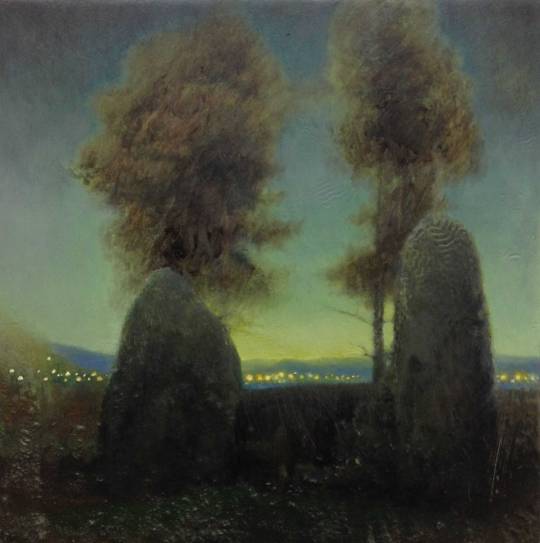
Sam Douglas (b.1978) - Chambered Cairn. 2018. Oil on board.
84 notes
·
View notes
Text
Cairns in Clusters: Chambered Cairns in Assynt
By Gordon Sleight
Carrachan Dubh chambered cairn near Inchdnadamph
Over the last twenty years I have thoroughly enjoyed tramping around Assynt, sometimes on my own and sometimes with groups of friends. That sense of enjoyment is often enhanced by surprises. It might be disturbing a mountain hare and seeing it race away at speed or watching an overhead confrontation between golden and…

View On WordPress
#AOC Archaeology#Assynt archaeology#Audrey Henshall#Bad na Cleithe#Chambered cairn#historic assynt#John Barber#Loch Borralan East#Moine Schist#Orkney Cromarty type chambered cairn#portal stones#Scottish archaeology#Syenite
0 notes
Text
Winter Solstice at Maeshowe Chambered Cairn
youtube
0 notes
Video
Cairns at Balnuaran of Clava in 1996 par Historic Environment Scotland
Via Flickr :
Balnuaran of Clava is the site of an exceptionally well preserved group of prehistoric burial cairns that were built about 4,000 years ago. The Bronze Age cemetery complex comprises passage graves, ring cairns, a kerb cairn, standing stones and the remains of a chapel. This view shows the centre and south west cairns taken with a Hi-spy, a camera attached to an extendable pole to capture the whole site in one photograph. Photographer: RCAHMS Image reference: SC357547 See more images of Balnuaran of Clava: canmore.rcahms.gov.uk/en/search/?keyword=Balnuaran+of+Clava © RCAHMS
#scotland#canmore#rcahms#archaeology#stone circle#cairn#ring cairn#Balnuaran of Clava#Clava Cairn#chambered cairn#Balnuaran#Balnuarin#Bronze#Age#cemetery#Highland#Inverness-shire#Croy and Dalcross#green#grey#gray#circle#stone#ring#landscape#prehistoric#burial cairn#SC357547#1996#flickr
0 notes
Text
Communing With The Ancestors At Dyffryn Ardudwy
Communing With The Ancestors At Dyffryn Ardudwy
Scan an ordnance survey map of Wales, and especially the county of Gwynedd where we were a couple of weeks ago, and you will soon spot a host of prehistoric remains: hut circles, standing stones and chambered tombs. They can be found on the coast, in the immediate hinterland and in the uplands of Snowdonia, thus giving an impression of a very busy ancestral landscape.
Of course there is no way of…

View On WordPress
#Bronze Age#chambered cairn#Dyffryn Ardudwy#Neolithic burial chamber#Pentre Ifan chambered tomb#Tish Farell Writer
0 notes
Text
Discover the ancient beauty of Cairn de Barnenez, a timeless Neolithic structure older than the Egyptian pyramids and the largest megalithic mausoleum in Europe.
34 notes
·
View notes
Photo
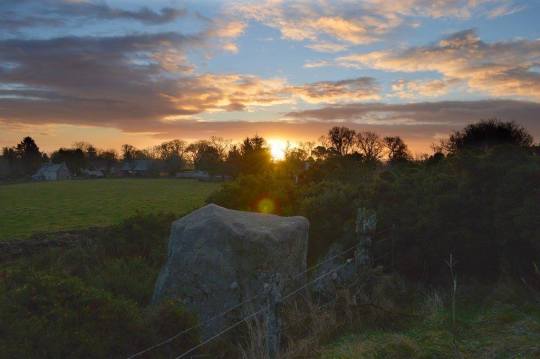
Clashmore, Midwinter Sunrise
An astronomical survey of about 70 Orkney-Cromarty round cairns in the Northern highlands suggested that the remains of the Clashmore burial chamber was aligned towards the midwinter sunrise. This was photographed at 9:20am on the 20th December 2013.
Clashmore is a scattered township in Assynt, in Sutherland, in the Highlands. It is situated on the Rubha Stoer, 10 km north west of Lochinver.
Pic from Canmore Rcahms but the original linkI posted years ago is now dead.
44 notes
·
View notes
Text
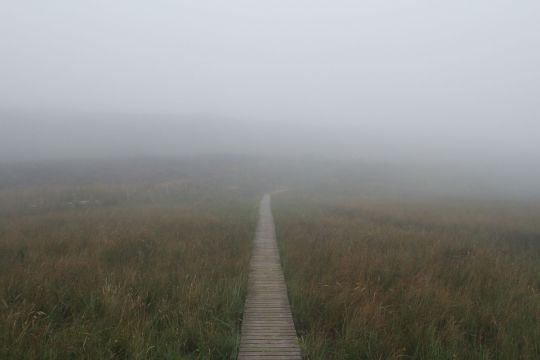
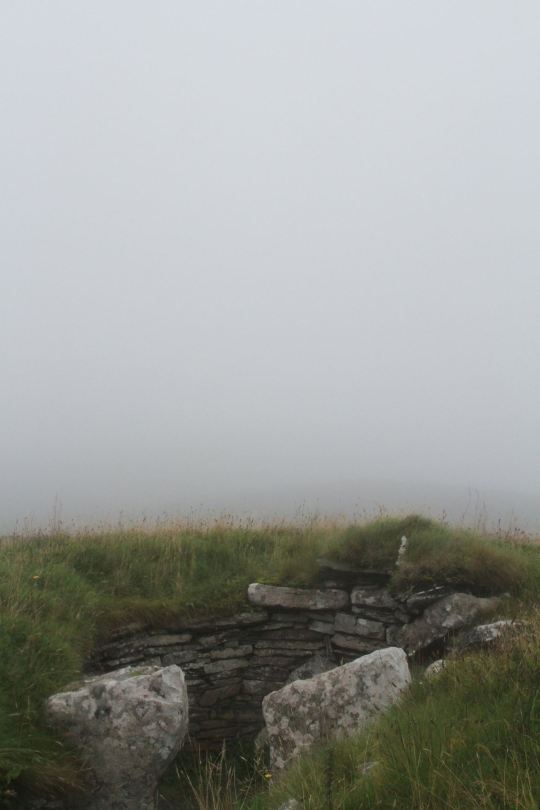
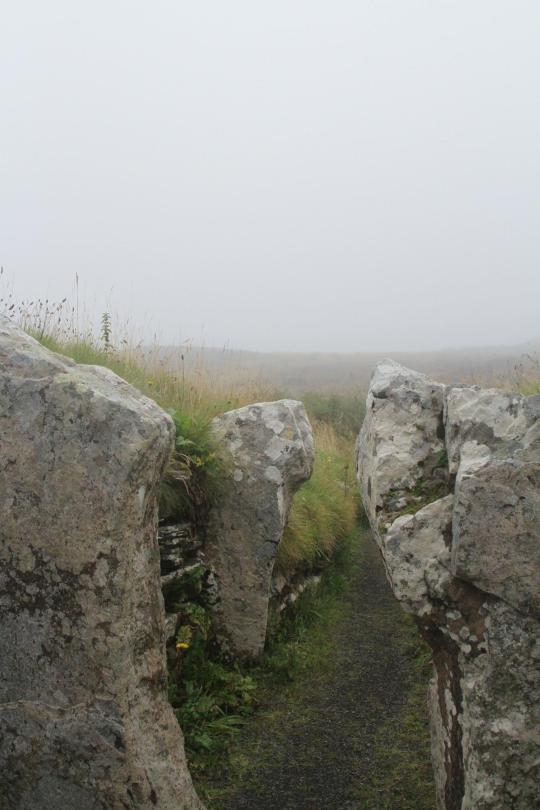
Cairn O' Get, 2016
0 notes
Text
I trick you into thinking we’re doing a cool pub crawl in Scotland but instead I take you on a cairn crawl and you’re stone cold sober as I force you to traipse across farmland with me and then infodump about the chambered tombs within.
#‘the remains of over 270 people yeah it’s kinda cool to be buried with your whole community’#’and dogs they found the remains of dogs in there! man’s best friend!’#‘whoaaa far out can’t imagine the time it took to do all of this rock work by hand’
10K notes
·
View notes
Text

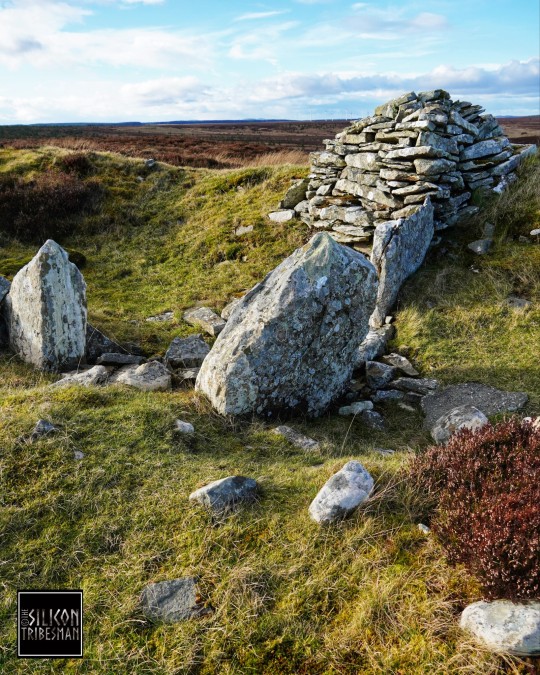


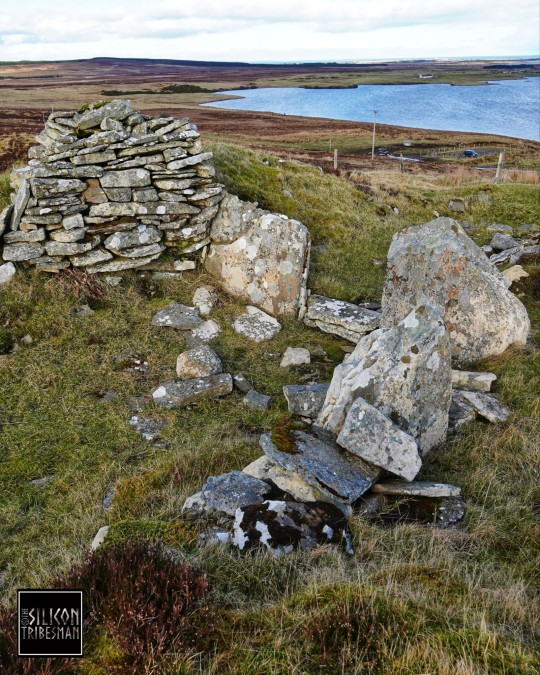
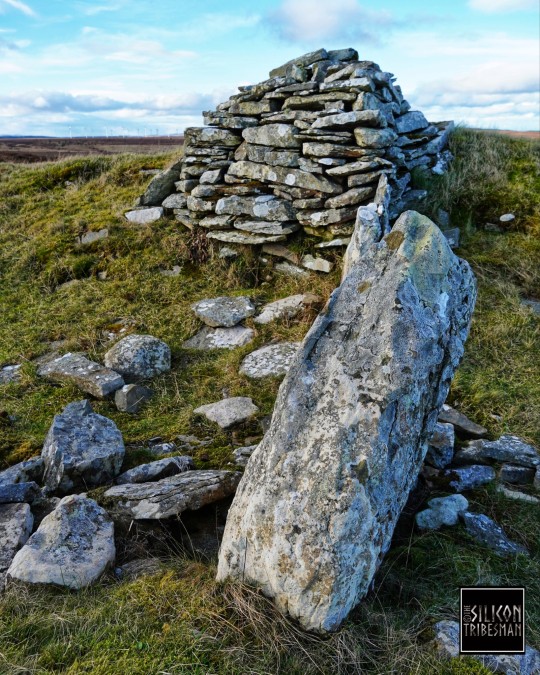

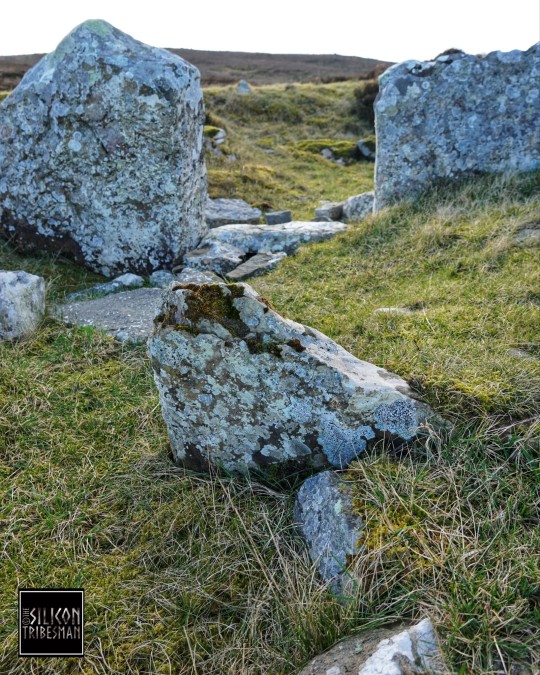
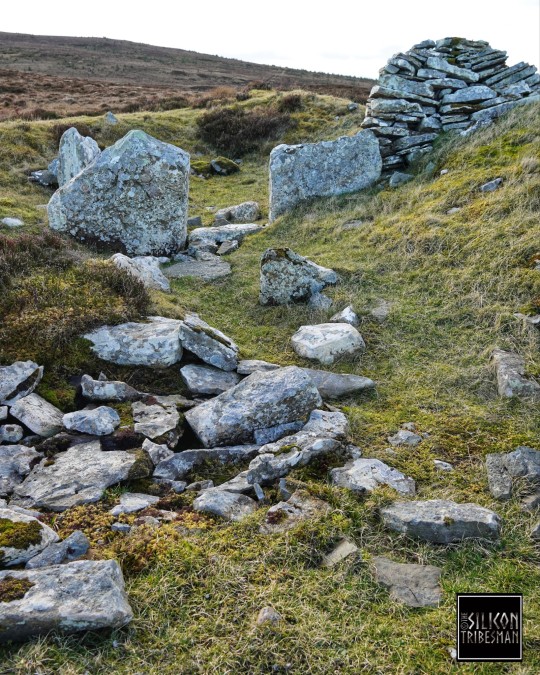
South Yarrows North Prehistoric Long Chambered Cairn, South Yarrows Archaeological Trail, Yarrows, Caithness, Scotland
#ice age#stone age#bronzeage#copper age#iron age#prehistoric#prehistory#chambered cairn#cairn#burial chamber#burial mound#stonework#ancient sites#Scotland#wild places#archaeology
148 notes
·
View notes
Text
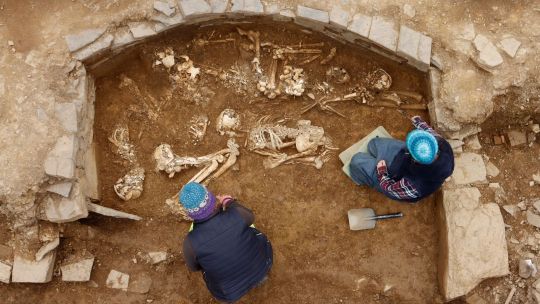
'Incredibly Rare' 5,000-Year-Old Tomb Discovered in Orkney, Scotland
A three-week excavation took place at the Neolithic site at Holm.
Archaeologists have discovered the ruins of an "incredibly rare" 5,000-year-old tomb in Orkney.
Fourteen articulated skeletons of men, women and children were unearthed at the Neolithic site at Holm on the mainland.
Experts from National Museums Scotland (NMS) and Cardiff University also uncovered additional human bones following a search for the tomb's precise location.
Volunteers and students from the University of Central Lancashire made other discoveries during the three-week excavation, including finding further remains, pottery, stone tools and a bone pin.
NMS said the Neolithic site had been buried beneath a pasture field after it had been largely destroyed without record in the late 18th or early 19th century to supply building stone for a nearby farmhouse.
In 1896, the farmer's son found eight skeletons at the site alongside traces of walling, a stone macehead and ball.

The Orcadian's report on the discovery featured local antiquary James Walls Cursiter, who speculated that the site was a ruined tomb - which prompted the location of the 2023 search.
The excavation was led by Dr Hugo Anderson-Whymark, of NMS, and Professor Vicki Cummings, of Cardiff University.
It targeted anomalies recorded via a geophysical survey undertaken in 2021.
It revealed traces of a cairn more than 15m in diameter, which contained a stone structure accessed through a 7m-long passage.
The archaeologists said a stone chamber lay at the centre of the cairn, and this was surrounded by six smaller side cells that once had corbelled stone roofs.
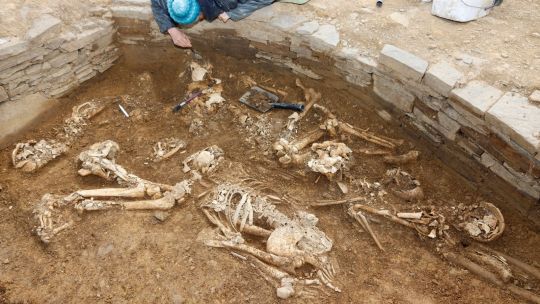
These features allow the tomb to be classed as a "Maes Howe-type" passage grave.
Only 12 tombs of this type are known in Orkney - including Maes Howe, Cuween and Quoyness - and are considered the "pinnacle of Neolithic engineering" in northern Britain.
Dr Anderson-Whymark said: "Orkney is exceptionally rich in archaeology, but we never expected to find a tomb of this size in a such a small-scale excavation.
"It's incredible to think this once impressive monument was nearly lost without record, but fortunately just enough stonework has survived for us to be able understand the size, form and construction of this tomb."


Professor Cummings added: "The preservation of so many human remains in one part of the monument is amazing, especially since the stone has been mostly robbed for building material.
"It is incredibly rare to find these tomb deposits, even in well-preserved chambered tombs, and these remains will enable new insights into all aspects of these peoples' lives."
By Jenness Mitchell.

#'Incredibly Rare' 5000-Year-Old Tomb Discovered in Orkney Scotland#ancient tomb#ancient grave#ancient artifacts#archeology#archeolgst#history#history news#ancient history#ancient culture#ancient civilizations
195 notes
·
View notes
Text
Carn Glas Chambered Cairns and Essich Farm, Inverness: An Interim Report

View On WordPress
#Audrey Henshall#Camster Cairns#Carn Glas chambered cairn#Chambered cairn#Drone#Dunain Community Woodlands#essich#Essich Farm#gorse removal#hut circles#Inverness Field Club#James D McCulloch#long cairn#MacKintosh of MacKintosh#mill lade#North of Scotland Archaeological Society#Orkney-Cromarty#roundhouse#stratherrick#V Gordon Childe
0 notes
Text
The Threefold Death was said to have been reserved for heroes, kings, mythic beings, or serious offenses. This type of death was extreme. Three deaths enacted upon the body; a drowning, a wounding/burning, and a hanging. As I was considering the Orion constellation and a created mythos based around the positioning of the constellation, I felt drawn to the notion that it was the specific positioning of the body that acted as a conduit for accessing the land of spirits. When the constellation is in the southern hemisphere and is inverted, it seems as though he is opening a door to the underworld.
This seemed like UPG at first until I came across a word that interested me: Maeshowe. It's a Neolithic burial chamber in Orkney, Scotland and the design of it is set up to be a chambered cairn to house the dead; however, there are some interesting things about this site that make it stand out.
For starters, not all of the graves contain human remains. This was either to space them out, giving them suitable room (it makes me wonder if they were distinguished individuals that were placed inside) - the other theory is that it was also or previously used for calendrical observations and rites. There are passages inside the mound that allow for observation of constellations and megalithic stones (furthering the notion that ceremonies and rituals were observed here).
What is most relevant here is that there are parts of Maeshowe that were purposely built upside down to resemble the afterlife.
"The interpretation is that the side chambers are built to be within the netherworld, by the main chamber walls acting as membranes, separating this life and the next, and that the internal walling material is conceived to physically represent the underworld." - Jay van der Reijden, University of the Highlands and Islands.
So with that being said, where my thoughts and research have been taking me is furthering my belief that the human body and soul(s) are an echo of the otherworld, and when rightly "attuned", facilitate the journey - open the gate - to those interactions. The concept of the suspended body may be a way of shocking the mind and souls into accessing the liminal and the upright or inverted postures may direct the gate that is accessed. It may even be viewed as a sort of tableau depicting a sacrifice played out - and while in this case it's not an actual sacrifice, it's symbolic in nature.
#cosmology#personal praxis#wren rambles#fairy faith#deity veneration#witchcraft#traditional witchcraft
32 notes
·
View notes
Text
CRYPTOLOGY
The Butterfly in honored Dust
Assuredly will lie
But none will pass the Catacomb
So chastened as the Fly –
E. Dickinson
Coming to Terms with the Terms
When dealing with tombs and graven things one can happen upon many evocative terms. What exactly is a sepulcher vs a sarcophagus? Sometimes these things are conflated within the popular tongue. But a true grave-robber knows the difference!
TOMBSTONES & CAIRNS
They are mostly the same. A cairn is an ancient version of what tombstones are today. Yet both retain that they are a grave marker of sorts. Smattered across the earth; they are simply the image-burn of an eons-lived sapience.
Cairns
As simple as a stacked pillar, pile or structure of stones. Beyond this, they are diverse. Some have passage-ways, while others appear as a wall.
Tombstones
Carved headstones. Upright or lain into the earth. They are beautifully made stelae with depictions of art and written epitaphs. Six-feet below, in the earth, lies the resting dead. With all their macabre possessions especially chosen to forever collect dust and grime with the interred.
CEMETERIES & GRAVEYARDS
These two are mostly the same. A plot of land, above the ground, where many cairns or tombstones are laid bare. The one difference being this: Cemeteries exist on their own plots of land, open to all. Graveyards exist on the plot of land surrounding an important structure. Such as an abbey or a manor house.
MAUSOLEUMS, BARROWS & CATACOMBS
These are great cemeteries, cities for the dead. Where the interred rest in chambers and not wrapped in dirt. Cut-off from daylight and fresh air. Sealed away, in the dark and the dust.
Mausoleum
A grand monument and structure to store the venerable interred. Usually above ground as a fortress. More often than not, they are plundered and long ago re-purposed.
Barrow
The Ancient version of a Mausoleum. Usually designed as, or inside of, a hillock. They boast numerous earth hewn passageways as well as false entrances, purposely crafted to confuse the unwary vandal.
Catacomb
Here lies the true tomb-stalker’s delight! They are an underground cemetery with numerous corridors and chambers containing the resting dead. Along with many a lifetime’s trappings, treasures and travesties. They lie in wait, within their complex halls, both pilfered and untouched alike.
TOMBS, CRYPTS, OSSUARIES & OUBLIETTES
These are the diverse chambers and corridors that form the final resting place for the interred. Usually as part of a greater complex within a mausoleum, barrow or catacomb. Here are some of the differences between them:
Tombs
Also known as Sepulchers. They are the singular chambers & rooms where the interred settle into their final resting place. These spaces can be of any size and house any number of resting dead. They are typically entered via an archway or, very rarely, a door of some sort.
Crypts
Possess the same qualities as Tombs with one crucial difference. Crypts, by their nature, are hidden or sealed away. They are exclusively entered via Sealed Stone Doors or Hidden Secret Doors.
Ossuaries
They can be either a Chamber or a Corridor. These are spaces to inter the venerable bones of the nameless dead. Each skeleton, skull and individual bone is placed with care into the architecture itself in reverence.
Oubliette
This is a malevolent place to inter the forgotten dead, forever to oblivion. Often buried alive and locked away in the dark or a maze. Other times a mass grave, thrown to darkness with a forgetful curse. They are often entered from a trapdoor in the ground or a locked and barred door, with no easy way to get back out of.
SARCOPHAGI, COFFINS, LOCULI & GRAVE NICHES
The specifics of how and what contains the resting dead inside of their chambers and hallowed halls.
Sarcophagus
The most ornate and regal way the dead can rest forever. Usually a stone boxed container, covered with a stone slab. Made of limestone or granite, and in rare cases marble. In very rare cases, the container is carved into the likeness of the interred.
Coffin
The same as a sarcophagus except it is made of wood and nails. Usually for the more commoner types of interred. Most often buried in the earth, or lined up in a single chamber.
Loculi
Ornate coffers built and lined into chamber walls. Made of small squared recesses carved into stone. Sealed or locked with square doors of stone or copper. Sometimes embellished with epitaphs or bas relief. Appear as many together, rather than just one or two.
Grave Niches
The lesser version of Loculi. Simple horizontal and rectangular niches carved into stone walls. The dead rest open to the air of the chambers and corridors they are in.
URNS & COLUMBARIUM
Urns are the jars, jugs, ceramics and amphora that contain the ashes of the dead. With a Columbarium being a chamber or corridor containing shallow square coffers specifically carved into the walls in order to display urns.
5 notes
·
View notes
Text
You can learn a lot about a people from how they bury their dead. The world is full of unique and fascinating burial sites that give us a glimpse into the lives of our ancestors.
13 notes
·
View notes